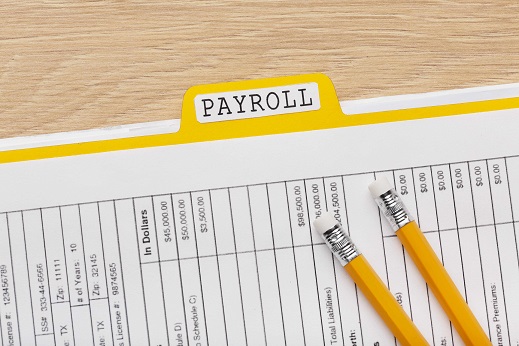EIN on Pay Stubs: Employer Basics Guide
EIN on Pay Stubs: Employer Basics Guide
An Employer Identification Number (EIN) is a nine-digit number assigned by the IRS to businesses for tax identification. For employers, including the EIN on pay stubs is more than just a formality—it ensures compliance, credibility, and accurate financial tracking. Whether you run a small business or a growing company, understanding how and why to include EIN on pay stubs is essential for smooth payroll management.
👉 For related payroll essentials, see our guide on Year-End Pay Stub Reviews to avoid errors during tax season.
What is an EIN?
An EIN functions like a Social Security Number for a business. It is required for filing business taxes, opening business bank accounts, and reporting employee wages. When employers provide pay stubs, adding the EIN clearly associates the payment with the company, ensuring proper record-keeping and compliance with tax regulations.
If you are new to payroll, our Affordable Pay Stub Software guide explains how startups and small businesses can manage this easily.
Why Employers Need an EIN
- To report payroll taxes to the IRS
- To establish credibility as a legitimate business
- To manage multiple employees and contractors efficiently
- To open business bank accounts and process payroll transactions
Why EIN Appears on Pay Stubs
Pay stubs provide employees with detailed earnings and deduction records. For employers, adding an EIN to pay stubs helps:
- Compliance: Aligns with IRS payroll and reporting requirements.
- Transparency: Builds trust by ensuring employees know the payment source.
- Verification: Makes income verification easier for employees applying for loans, leases, or mortgages.
- Professionalism: Demonstrates proper payroll practices and company legitimacy.
👉 Learn more about employee benefits visibility in our Sick Leave on Pay Stubs guide.
Components of a Pay Stub with EIN
A professional pay stub should include multiple elements beyond just the EIN. Common components are:
- Employer name, address, and EIN
- Employee name and identification
- Pay period and payment date
- Gross earnings
- Deductions (federal, state, Medicare, Social Security, etc.)
- Net income
Employers can use a Regular Pay Stub Generator to ensure these details are accurately reflected for every payment cycle.
How to Generate Pay Stubs with EIN
Manually creating pay stubs can be time-consuming and prone to errors. Instead, employers can rely on a professional Pay Stub Generator to include EIN and other necessary details automatically. These tools allow you to:
- Input employer EIN, company name, and address
- Include employee details
- Calculate gross and net pay
- Display deductions clearly
- Download and distribute professional pay stubs instantly
Compliance and Legal Importance
Employers must comply with federal and state laws regarding payroll. EIN ensures that payments are linked to the correct business entity when filing payroll taxes. Failing to include EIN on pay stubs may cause confusion during audits or when employees file taxes. Visit the U.S. Department of Labor for more payroll compliance details.
IRS Reporting
When businesses submit payroll taxes, EIN is the primary identifier. Including it on pay stubs ensures consistency across all financial documents.
Employee Confidence
Employees trust employers who provide professional, EIN-included pay stubs, as it reassures them that payroll is legitimate and accurate.
Benefits of Using Digital Pay Stubs
Employers can streamline payroll processes by switching to digital pay stubs. Benefits include:
- Accuracy: Automated calculations reduce human error.
- Time-saving: Generates stubs instantly with EIN included.
- Record-keeping: Digital files are easy to store, retrieve, and share.
- Cost-effective: Eliminates the need for paper and printing.
See how automation helps in our article on Digital Signatures on Pay Stubs for added payroll security.
Best Practices for Employers
- Always verify the EIN with the IRS before using it.
- Ensure pay stubs are accurate and distributed on time.
- Use secure systems to protect employee and company data.
- Provide digital copies of stubs for easy employee access.
- Maintain consistent records for audits and reporting.
Conclusion
Including an EIN on pay stubs is an essential responsibility for employers. It ensures compliance, builds trust with employees, and strengthens professional credibility. By using a reliable Pay Stub Generator, employers can streamline payroll, reduce errors, and provide accurate records for both employees and tax authorities. Staying compliant and professional with EIN-included pay stubs is a vital step in maintaining a strong business foundation.

